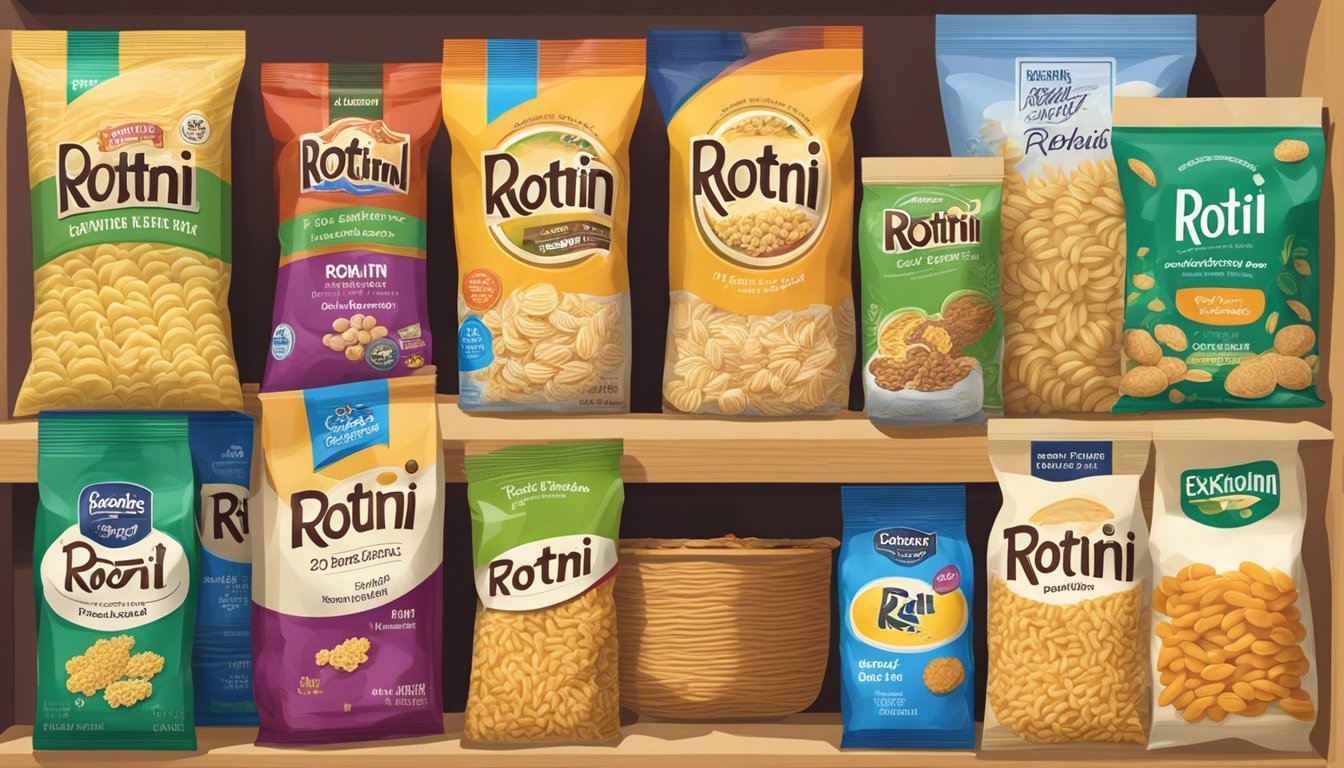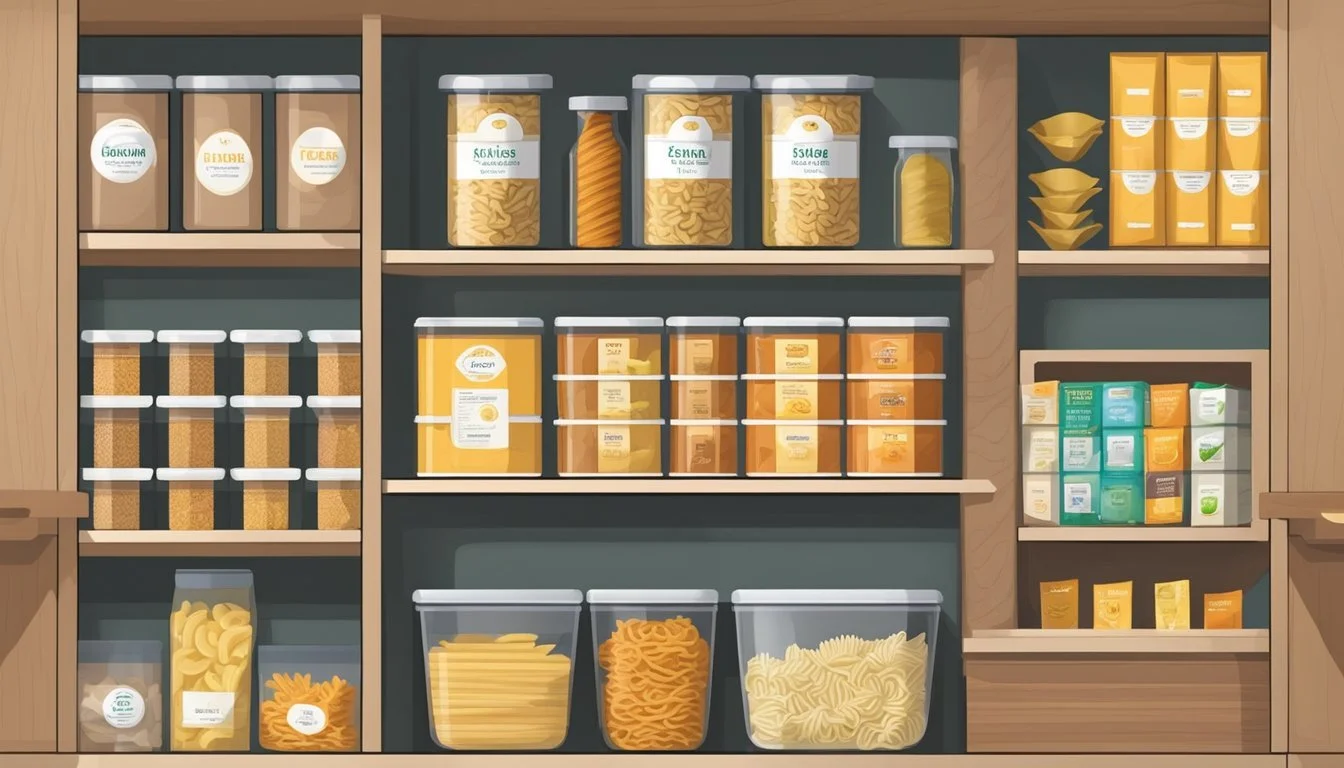Does Rotini Expire?
Understanding Shelf Life and Storage
When it comes to rotini pasta, many people wonder whether it expires and how to properly store it. Dry rotini pasta can maintain its best quality for up to three years when stored correctly in a tightly sealed container at room temperature. This longevity makes it a staple in many households for quick and easy meals.
Quality and safety are crucial factors to consider. An unopened package of dry rotini pasta should be kept in a cool, dry place, away from direct sunlight. Once opened, placing the pasta in an airtight container can help preserve its quality.
Pay attention to any signs of spoilage, such as a rancid or sour smell, or discoloration. If any of these signs are present, it is best to discard the pasta. Consuming spoiled pasta can pose safety risks, so proper storage is key to extending its shelf life.
Understanding Pasta Types and Their Shelf Life
Different types of pasta have varying shelf lives influenced by their ingredients and storage methods. Dry pasta and fresh pasta differ significantly in terms of durability and perishability.
Differences Between Dry and Fresh Pasta
Dry pasta is made from semolina flour and water, rendering it shelf-stable. This variety can last for 1-2 years beyond its "best by" date if stored properly. Common types include rotini, spaghetti, and penne. Packaging often plays a crucial role in its longevity; airtight containers can extend its shelf life.
Fresh pasta contains ingredients like eggs, making it more perishable. This type generally includes fettuccine and ravioli. With a shorter life span of 4-5 days past its "best by" date when refrigerated, it's important to consume fresh pasta much sooner. Freezing fresh pasta can extend its usability to about 1-2 months.
Role of Ingredients in Shelf Life
The primary ingredients in pasta significantly impact its shelf life. Durum wheat semolina, used in dry pasta, is less prone to spoilage due to low moisture content. This characteristic makes dry pasta highly shelf-stable.
Fresh pasta, involving eggs, demands careful storage. Eggs introduce moisture and potential for bacterial growth, limiting shelf life. This is why fresh pasta is best kept in the refrigerator or freezer to maintain quality and safety.
In summary, understanding the composition and storage needs of different pasta types can help ensure optimal use and extended shelf life. Properly managing the storage of both dry and fresh pasta is key to enjoying their best quality.
Signs of Expired Rotini
There are several signs to watch for when determining whether rotini pasta has expired. Key indicators include visual changes like discoloration and mold, olfactory changes involving an unpleasant smell, and tactile changes such as an altered texture.
Visual Indicators: Discoloration and Mold
Expired rotini often shows discoloration. The pasta may change from its typical golden hue to an uneven, dull color. This can be a sign that the pasta has deteriorated and should not be consumed.
Mold is another clear indicator. If you find fuzzy patches of mold in any shade—white, blue, or green—on the pasta, it should be discarded immediately. Mold typically appears when moisture has infiltrated the packaging, promoting bacterial growth.
Olfactory Signals: Changes in Smell
Rotini pasta that has gone bad might emit a rancid or sour smell. Normally, dry pasta should have little to no odor.
If the pasta smells off, it is a strong indication that it has expired. Cooking the pasta with such an odor is not recommended, as it may be contaminated and unsafe to eat.
Tactile Clues: Texture and Consistency
Expired rotini may exhibit a slimy texture. This is especially true for cooked pasta that has been stored improperly or for too long.
Dry rotini should not feel brittle or soft but should maintain a firm consistency. If the pasta feels unusually soft or breaks easily, it has likely expired.
In summary, keeping an eye on these specific signs will help ensure that your rotini pasta remains safe and enjoyable to eat.
Proper Storage Techniques
To ensure rotini pasta remains fresh and maintains its quality for as long as possible, attention to storage conditions and container choices is crucial. This section will discuss the impact of environmental factors and the best types of containers for storing rotini.
Environmental Factors Affecting Pasta Longevity
Environmental conditions like temperature, light, and moisture play a significant role in the shelf life of rotini pasta.
Temperature: Storing pasta in a cool, dry area helps in maintaining its quality. A pantry that remains at room temperature, ideally between 68-72°F (20-22°C), is optimal.
Light: Exposure to direct sunlight can accelerate the degradation of pasta. Hence, a dark place, such as a cabinet or pantry, is ideal to prevent light-induced spoilage.
Moisture and Humidity: Rotini should be kept away from moisture and high humidity. These factors can lead to mold growth and make the pasta unfit for consumption. Using a dehumidifier in areas with high humidity can be beneficial.
Container Choices for Maximizing Freshness
The choice of container is critical for extending the freshness of rotini pasta.
Airtight Containers: Keeping rotini in an airtight container is one of the best ways to protect it from moisture and contaminants. These containers limit exposure to air, which helps in preserving texture and flavor.
Original Packaging: If the pasta will be consumed soon, leaving it in its original packaging, provided it is resealed properly, can be convenient. For longer storage, transferring to a more secure container is advised.
Vacuum-Sealed Bags: For long-term storage, using a vacuum-sealing food preservation machine is highly effective. This method removes air from the packaging, providing a low-oxygen environment that helps in maintaining the pasta’s quality for longer periods.
By considering these storage techniques, rotini can remain fresh and safe for consumption for extended durations. Properly controlling environmental factors and choosing suitable containers are key to maximizing the pasta's shelf life.
Usage Beyond the 'Best By' Date
Rotini pasta can often be used beyond its "best by" or "best if used by" date, but it's important to assess its quality and safety before doing so. Additionally, cooking techniques can help make older pasta more palatable.
Assessing Quality and Safety Post-Expiration
Even if the rotini is past its "best by" date, it might still be safe to consume. Check for signs of spoilage such as an unusual smell, discoloration, or any visible mold. Dry rotini is less likely to go bad quickly due to its low moisture content.
Storing dry rotini:
Airtight containers: Keep the pasta in a tightly sealed container to prevent moisture and pests.
Check before use: Always inspect the pasta for any signs of spoilage even when stored properly.
If no spoilage is detected, cook a small amount to test its texture and taste since these may degrade over time.
Cooking Tips for Less-Than-Fresh Pasta
When dealing with rotini past its prime, certain cooking methods can improve the dining experience.
Boiling:
Add salt: To enhance flavor, add a little extra salt to the boiling water.
Cook al dente: Aim for 'al dente' by reducing the cooking time slightly to retain some firmness in the pasta.
Use broths or sauces: Cooking the pasta in broths or richer sauces can help mask any minor changes in texture or taste.
Flavor Enhancers:
Cheese or herbs: Using robust flavors like cheese, garlic, or herbs can also help enhance the dish.
Pasta salad: Incorporate the rotini into a cold pasta salad with strong-flavored dressings to disguise any off-textures.
By paying attention to these tips, you can safely and enjoyably use rotini pasta even beyond its labeled date.
Health Implications of Consuming Expired Pasta
Consuming expired pasta can pose certain health risks, primarily related to foodborne illnesses caused by bacteria and mold. Ensuring proper storage and checking for signs of spoilage can mitigate these risks.
Recognizing Foodborne Illness Risks
Expired pasta may harbor bacteria such as Salmonella or E. coli if left in conditions conducive to bacterial growth. These bacteria can cause symptoms including nausea, vomiting, diarrhea, and abdominal cramps.
Refrigeration can slow bacterial growth in cooked pasta, but dried pasta is less susceptible to bacterial contamination. Still, once the pasta is past its best-by date for too long, its safety could decrease.
Impacts of Bacteria and Mold Consumption
Mold on expired pasta is usually visible as fuzzy spots. Ingesting moldy pasta can lead to respiratory issues, allergic reactions, or mycotoxin poisoning. The latter can cause serious health effects, including immunosuppression and organ damage.
Even without visible mold, toxin-producing bacteria can develop as pasta deteriorates. These bacteria might not result in immediate symptoms but could be harmful over time. Always ensure proper storage in airtight containers to limit exposure to moisture and contaminants.
Practical Tips for Rotini Consumption
Selecting high-quality pasta, mastering proper cooking techniques, and pairing with the right sauces can greatly enhance your rotini dining experience. Below are specific tips to help you achieve the best flavor and texture.
How to Choose High-Quality Pasta Brands
Choosing high-quality rotini starts with selecting the right brand. Look for pasta made from 100% durum wheat semolina, which offers a firm texture and rich flavor. Brands like Barilla, De Cecco, and Ronzoni are known for their consistent quality.
Inspect the pasta for a uniform color and absence of spots or cracks. Organic and non-GMO options may also be considered for those prioritizing health and environmental factors.
Cooking Techniques for Optimal Flavor and Texture
Proper cooking is essential for achieving the ideal texture and flavor of rotini. Start by boiling water with a generous amount of salt—about 1 tablespoon per 4 quarts of water. This enhances the pasta’s natural flavor.
Boil rotini for 7-10 minutes, depending on the brand and your preferred level of firmness. It's crucial to follow the package instructions while occasionally tasting to ensure an al dente texture. Drain and avoid rinsing to retain the pasta's starch, which helps sauce adherence.
Pairing Rotini with the Right Sauces
Pairing rotini with the appropriate sauce can elevate your dish. The corkscrew shape of rotini is perfect for holding thick, hearty sauces. Consider using marinara, Alfredo, or pesto to complement its chewy texture.
For a lighter option, a simple olive oil and garlic sauce can also be effective. Incorporate fresh vegetables, meats, or cheeses to tailor the dish to your taste. Proper sauce pairing ensures that each bite is flavorful and satisfying.
Smart Shopping and Stocking Strategies
Ensuring optimal shelf life and preserving the quality of rotini pasta starts with smart shopping and proper storage. These tips will help you buy appropriate amounts and maintain your pantry staples effectively.
Calculating Appropriate Amounts to Buy
Before purchasing, assess how often rotini is consumed in your household. A general guideline is to use past usage patterns to estimate future needs.
Buying in bulk can be cost-effective, but ensure it aligns with your consumption rate. A typical package of dry rotini has a shelf life of about three years if stored correctly.
Table Example:
Household Size Monthly Consumption Suggested Purchase 1-2 persons ~2 pounds 6 pounds per 3 months 3-4 persons ~4 pounds 12 pounds per 3 months
Storing Bulk Purchases Safely
Dry rotini should be kept in a cool, dry place to maximize its shelf life. Transferring pasta to airtight containers such as jars or plastic bins helps maintain quality by preventing moisture and pests.
Consider using aluminum foil to wrap opened packages before sealing them in containers. Label each container with the purchase date for easier rotation of stock. Cooked rotini can last up to 5 days in the refrigerator, extending its usability when stored properly.







